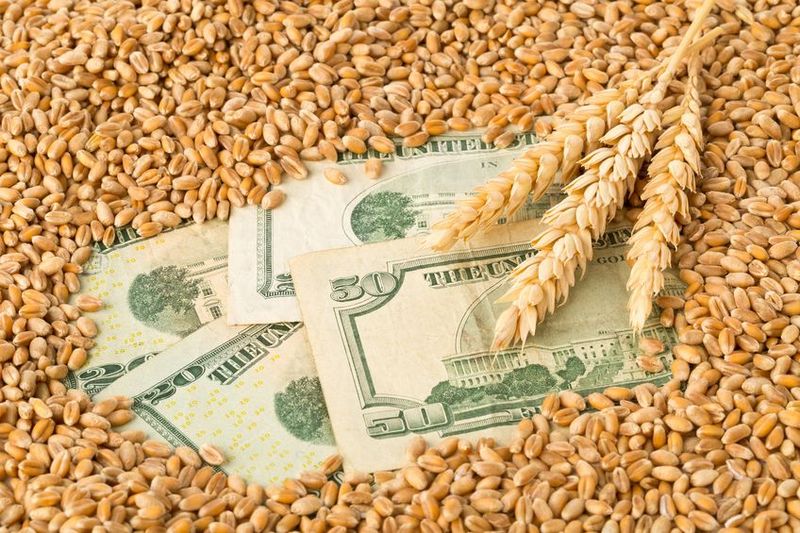Australia: Markets flat as rain misses NNSW

Trade remains thin in feed wheat and barley as growers hold off on sales in the last weeks of the 2022-23 financial year, and consumers buy hand to mouth in the hope eastern Australian prices will soften.
The Bureau of Meteorology on Tuesday issued its first El Nino Alert in this week, upgraded from an El Nino Watch status first issued in this cycle on March 14.
To counter concerns about dry weather it has brought has been widespread rain across southern Australia in the past week.
However, northern New South Wales, where only a fraction of intended wheat area has been planted to date in most districts, has had mostly single-digit falls.
| Jun 8 | Jun 1 | New crop | |
| Barley Downs | $428 | $430 | NQ |
| SFW wheat Downs | $415 | $412 | $415 MG* |
| Sorghum Downs | $373 | $395 | NQ |
| Barley Melbourne | $352 | $365 | $350 |
| ASW Melbourne | $400 | $400 | $392 |
| SFW Melbourne | $395 | $395 | NQ |
Table 1: Indicative prices in Australian dollars per tonne. *Multigrade
Values for SFW wheat delivered Downs have firmed a few dollars in the past week to reflect an ongoing paucity of grower selling in northern NSW and southern Queensland.
“Everything’s got a firmer tone about it,” one trader said in relation to the southern Qld wheat market.
Barley values have eased in the past week as grain from central and southern NSW trucks north, and whispers about the trade looking at barley shipped from Western Australian seep into the market.
“Given where WA values are for July-August, it’s a possibility.”
The trader said negative exports margins for wheat exist out of Brisbane and NSW ports, a function of the premium inland markets are paying over export parity.
“The trade isn’t long, it’s the farmer who’s long; they hold all the grain.”
Another trader said companies with rail slots and/or port facilities are hanging on to grain and making money out of exporting wheat and sorghum ex Brisbane and Newcastle, while smaller traders are “tipping a bit of length out of depot ownership”.
Feedlots are generally seen as covered into September, when new-crop wheat out of Central Qld is expected to hit the market.
In the week to 9am today, grain-growing in central and northern NSW have had little rain, with Condobolin on 18mm being an exception, and since 9am, a few locations have jagged up to 8mm.
While chickpeas are best placed to take advantage of subsoil moisture and can be planted well into June, some growers are planting barley in fallow country, or small areas where wheat or canola has been sprayed out after a patchy start.
Sorghum trade is very choppy, with one source reporting exporters have been paying up to $400/t delivered Downs to fill orders, well above the delivered consumer market of $370-$375/t.
Growing areas across southern Australia have generally had an ideally timed 20-40mm of rain in the past week to bolster prospects for at least average yields, provided spring is not excessively hot and dry.
“Growers are all pretty happy,” one trader said.
This week has seen four Grainlink entities in the Griffith region of south-west NSW go into voluntary administration.
They are: Grainlink (NSW) Pty Ltd; Grainlink Storage Pty Ltd; Grainlink Resources Pty Ltd; Walsh Link Pty Ltd, and Western Riverina Intermodal Freight Terminal Pty Ltd.
Sites owned by the abovementioned companies, with Paul Pearsall and Dean Salvestro as directors, have halted any grain movement operations while they are reviewed by the administrators.
Grain Central understands the development has occurred at the behest of the directors to settle the value of the companies, and that trading operations have been occurring since last year under Australian Grain Link, as owned outright by Mr Salvestro.
Grain Central also understands grain held by Grainlink and associated companies is being held on a fee-for-service basis, and grower and trade exposure is therefore limited.
Read also
Wheat in Southern Brazil Impacted by Dry Weather and Frosts
Oilseed Industry. Leaders and Strategies in the Times of a Great Change
Black Sea & Danube Region: Oilseed and Vegoil Markets Within Ongoing Transfor...
Serbia. The drought will cause extremely high losses for farmers this year
2023/24 Safrinha Corn in Brazil 91% Harvested
Write to us
Our manager will contact you soon



